
Palm leaf skeletonizer
Homaledra sabalella (Chambers)
(Insecta: Lepidoptera: Coleophoridae)
Adult moths have a body length of approximately 6.5 mm and a wingspan of 16 mm. They are grayish brown with two black spots toward the tip of the forewing. Larvae are yellowish white to pale green, cylindrical, and grow to about 16 mm long.
Duration of the life cycle is not well documented. Female moths deposit eggs on the unfolding leaves. Larvae feed on mature palm fronds and move about in a silken web interlaced with their feces. They do not consume the leaf veins, resulting in a skeletonized appearance of damaged leaves. Pupation occurs on the leaf. Several generations occur per year.
Homaledra sabalella is native to Florida and the Caribbean.
Homaledra sabalella larvae feed on a number of palm species in the family Palmaceae.
Images
To save the Web-optimized images shown below to your hard drive:
PC users: right click to "Save Picture (or Image) As..."
Mac users: click and drag to your desktop.

Adult of palm leaf skeletonizer, Homaledra sabalella (Chambers)
(Photographer: Lyle Buss, University of Florida)
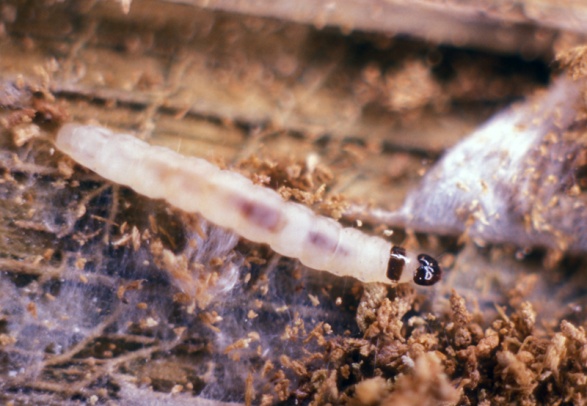
Larva of palm leaf skeletonizer, Homaledra sabalella (Chambers)
(Photographer: James Castner, University of Florida)
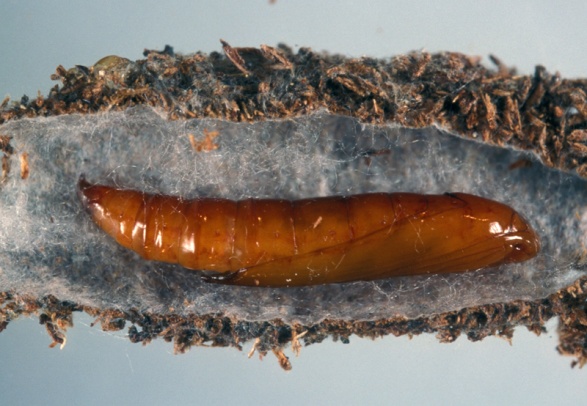
Pupa of palm leaf skeletonizer, Homaledra sabalella (Chambers)
(Photographer: Lyle Buss, University of Florida)
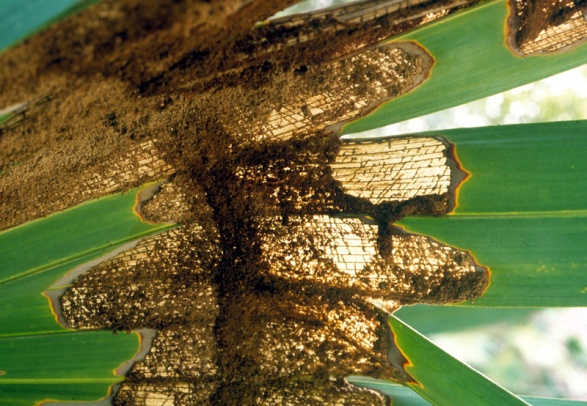
Typical leaf damage caused by palm leaf skeletonizer, Homaledra sabalella (Chambers)
(Photographer: James Castner, University of Florida)
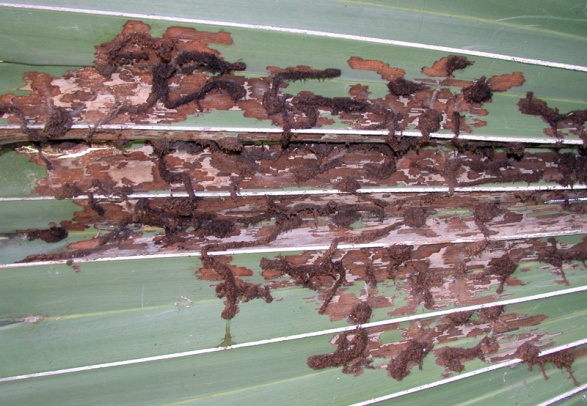
Damaged palm leaves and frass of palm leaf skeletonizer, Homaledra sabalella (Chambers)
(Photographer: Lyle Buss, University of Florida)
Saw palmetto damaged by palm leaf skeletonizer, Homaledra sabalella (Chambers)
(Photographer: Lyle Buss, University of Florida)
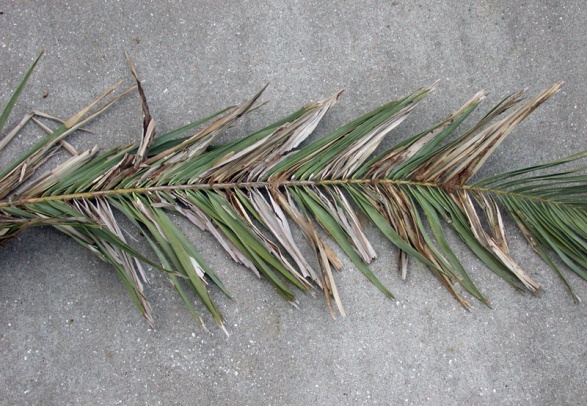
Phoenix canariensis damaged by palm leaf skeletonizer, Homaledra sabalella (Chambers)
(Photographer: Lyle Buss, University of Florida)